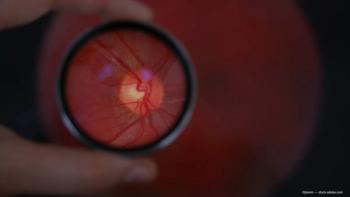
Q&A: Anat Loewenstein discusses the use of home OCT
Key Takeaways
- Home OCT and AI significantly improve early detection and treatment adjustments in neovascular AMD, enhancing patient outcomes.
- Studies show home OCT extends treatment intervals and improves patient compliance, impacting treatment decisions.
Anat Loewenstein, MD, discusses the transformative impact of home OCT and AI on monitoring retinal diseases at AAO 2025.
During the American Academy of Ophthalmology (AAO) annual meeting, the Eye Care Network caught up with several of Editorial Advisory Board members. Anat Lowenstein, MD, is an editorial advisor to
Note: The following conversation has been lightly edited for clarity.
Ophthalmology Times: From your clinical experience, how does home OCT change the monitoring paradigm for patients with neovascular AMD in terms of early detection of activity and treatment adjustments?
Anat Loewenstein, MD: From all the studies that we have done regarding the home OCT, we found that it can really make a big, big change in the lives of our patients and in the outcome of treatment modalities. We have been able to show both the agreement of the AI, which is implemented in the home OCT with expert graders regarding the presence and absence of intraretinal hyper reflective spaces and subretinal hyper reflective spaces. We've been able to show that the agreement between the AI generated with the home OCT is more similar to other graders than the agreement between the graders themselves. We were able also to show that it has a significant clinical impact on on the management of the patients.
OT: What are the challenges you have encountered (or anticipate) in terms of image quality, patient compliance, and interpretation when using home OCT, and how have impacted treatment decisions?
Loewenstein: In a study which was performed by Nancy Holekamp, where patients were switched from conservative monitoring to home monitoring, the treatment interval increased from 8 to 15.3 weeks, which is a big difference. On average, patients came to be examined around 4 days after they were notified, so they are pretty much compliant with the recommendation of the system.
A retrospective study done by Jeff Heier and Nancy Holekamp showed that when the resident specialist looked back at their decisions and then tried to evaluate how they would have decided with the home OCT, in about 40% of the cases they would have decided not to treat; and in the cases that they treated, and in most of the most of the cases when they decided to treat, the treatment would have been after a longer interval. So it has a huge impact on our treatment decisions.
OT: How does the use of home OCT affect patient outcomes—including visual acuity, number of clinic visits or injections—and what evidence supports its cost-effectiveness and overall impact on patient quality of life?
Loewenstein: Now regarding the patients themselves, I think the home OCT will have a great impact. We already have some real world managed patients by the home OCT, and we are able to show on an anecdotal basis that the treatment interval can increase while the patients are using the home OCT, even in very difficult to treat patients.
These are the patients on whom we try new technologies, just because of the more granular inspection of the data that we have of the patients' retina, with so many home devices. Of course, in order to get the final result, the final conclusion, we need to wait for the results of [Protocol AO of the DRCR Network], which is going to look at 600 patients over 104 weeks, comparing treat-and-extend with home monitoring. All patients are treated with faricimab, and it's the outcome measures are a superior outcome in terms of visual acuity and number of injections.
The home OCT potentially has a great impact on patient outcome because it allows a very granular look at the fluid and thus decisions on treatment which are more accurate to the patients. Of course, in order to see the longitudinal outcome, to see that the patients really have better visual acuity or or a lower number of injections with the same visual acuity, we need to wait for a longitudinal trial results such as the Protocol AO of the DRCR Network that is going to look at this question particularly.
Newsletter
Don’t miss out—get Ophthalmology Times updates on the latest clinical advancements and expert interviews, straight to your inbox.









































